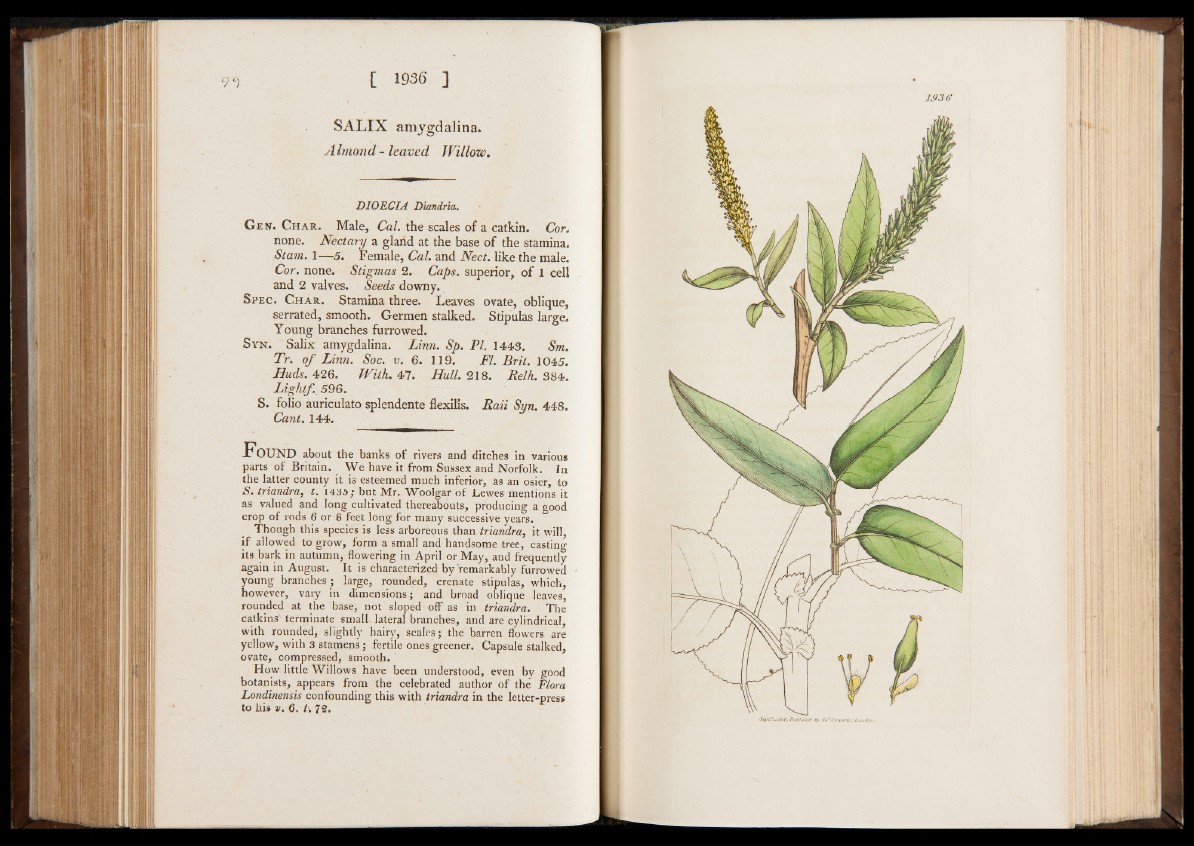
S A L IX amygdaHna.
Almond - leaved Willow.
DIOECIA Diandria.
G en. Char. Male, Cal. the scales of a catkin. Cor.
none. Nectary a gland at the base of the stamina.
Stam. 1— 5. Female, Cal. and Nect. like the male.
Cor. none. Stigmas 2. Caps, superior, of 1 cell
and 2 valves. Seeds downy.
Spec. Char. Stamina three. Leaves ovate, oblique,
serrated, smooth. Germen stalked. Stipulas large.
Young branches furrowed.
S yn . Salix amygdalina. Linn. Sp. PI. 1443. Sm.
Tr. o f Linn. Soc. v. 6. 119. FI. Brit. 1045.
Huds. 426. With. 47. Hull. 218. Relh. 384.
Lightf. 596.
S. folio auriculato splendente flexills. Rail Syn. 448.
Cant. 144.
FO U N D about the banks of rivers and ditches in various
parts of Britain. We have it from Sussex and Norfolk. In
the latter county it is esteemed much inferior, as an osier, to
S. triandra, t. 1435; but Mr. Woolgar of Lewes mentions it
as valued and long cultivated thereabouts, producing a good
crop of rods 6 or 8 feet long for many successive years.
Though this species is less arboreous \ha.n triandra, it will,
if allowed to grow, form a small and handsome tree, casting
its bark in autumn, flowering in April or May, and frequently
again in August. It is characterized by remarkably furrowed
young branches ; large, rounded, crenate stipulas, which,
however, vary in dimensions; and broad oblique leaves,
rounded at the base, not sloped off as in triandra. The
catkins' terminate small lateral branches, and are cylindrical,
with rounded, slightly hairy, scales; the barren flowers are
yellow, with 3 stamens; fertile ones greener. Capsule stalked,
ovate, compressed, smooth.
How little Willows have been understood, even by good
botanists, appears from the celebrated author of the" Flora
Londinensis confounding this with triandra in the letter-press
to his v. 6. t. 72.